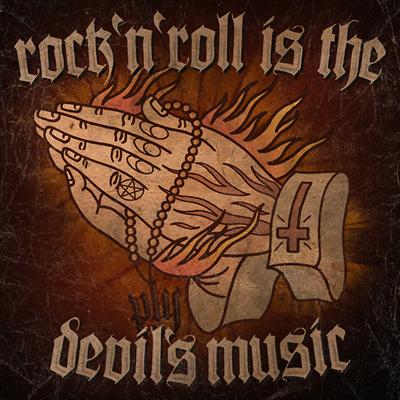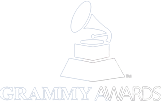Home Frank’s Blog Part 7 – Moving Beyond Genre
Part 7 – Moving Beyond Genre
Frank Fitzpatrick 12/10/2012

|
No time to read? Pick your language & press PLAY
Getting your Trinity Audio player ready...
|
“Our music is a bridge where people can meet, dance, love, and create.” – Les Nubians
 When I decided to found EarthTones a few years ago and to focus more on the transformational power of music and film for positive social change, I actually thought I would be moving away from many areas of the business that had been draining to me or were out of alignment with my worldview. I had produced some pretty successful Hip Hop artists and soundtracks by that point, including the original Friday and In Too Deep, but I imagined I would be doing far fewer of those with my new vision and commitment. Don’t get me wrong: the projects were great experiences and the artists are all good people; the nature of the business, however, had become pretty disenchanting to say the least.
When I decided to found EarthTones a few years ago and to focus more on the transformational power of music and film for positive social change, I actually thought I would be moving away from many areas of the business that had been draining to me or were out of alignment with my worldview. I had produced some pretty successful Hip Hop artists and soundtracks by that point, including the original Friday and In Too Deep, but I imagined I would be doing far fewer of those with my new vision and commitment. Don’t get me wrong: the projects were great experiences and the artists are all good people; the nature of the business, however, had become pretty disenchanting to say the least.
As a genre, Hip Hop often carries connotations that aren’t compatible with conscious social change. It seems the challenges of the industry had narrowed my vision of Hip Hop as well, but my journey forward revealed a whole new and welcome perspective, along with many unexpected revelations. The more work I did around the world, the more I uncovered a movement rising up from within global Hip Hop culture infused with messages of empowerment and unity, expressed in all kinds of musical forms and embraced by countless nationalities around the globe.

Just as I was trying to leave the often-unruly business of Hip Hop, I surprisingly found myself being drawn back in. Right out of the gate, I was recruited for a United Nations-sponsored campaign to bring awareness to handicapped victims of war in the Middle East. With the target audience predominantly under the age of 25, Hip Hop became the musical genre of choice.I had the honor of collaborating with the highly intelligent and conscientious Arabic Hip Hop artist Rayess Bek on a song and music video broadcasting messages of empathy and unity across the 22 Arab-speaking nations. That project was soon followed by others, including an AIDS awareness campaign for teens in inner-city schools and a Forest Whitaker film about Hurricane Katrina – once again involving collaborations with conscientious Hip Hop artists. The trend was clear: Hip Hop had become the largest music-driven cultural movement for youth worldwide, making it one of the most far-reaching channels for supporting social outreach and shifting consciousness.
I was still pretty sure, however, I wouldn’t take on the headaches of producing another Hip Hop soundtrack. I guess I hadn’t learned to “never say never.” When I was asked by my dear friend writer/director Robert Adetuyi (Stomp the Yard) to create a soundtrack for his film Beat the World – a teen drama about dance crews vying for titles in the International Hip Hop Dance Competition, I had to re-examine my goals and vision and be honest about any self-limiting beliefs that might keep me from fulfilling them. Rob’s film was a positive story of overcoming challenges and pursuing dreams. Shot in four urban cultural centers – Detroit, Berlin, Toronto and Rio de Janeiro, the film not only brought talent and perspectives from around the globe, but would be distributed to young audiences in over 20 countries. I embraced the film as another opportunity to shift social paradigms and inspire youth through music and film, and to help shine a more positive light on global Hip Hop culture itself.
As part of my journey and continued awakening, I was able to create meaningful collaborations between leading voices of change from several countries, including K’Naan (Somalia), KRS-One (US), MV Bill (Brazil), Sway (UK), Nneka (Nigeria), Bajah and the Dry Eye Crew (Sierra Leone), Talib Kweli (US), Les Nubians (France), and Ziggy Marley (Jamaica). The music also crossed and embraced musical styles from several different genres, yet all under the banner of “Global Hip Hop.” Maybe our hope to break down barriers – both physical and psychological, it is best summed up in the song “Hip Hop Nation” when KRS-One and K’NAAN together proclaim:
“We’re gonna dance to the hall through the halls of freedom, tear down the walls – baby, we don’t need ’em.”
Today I am working on another youth-focused film, but this time in China – one of the new epicenters for the coming cultural revolution; and “Hip Hop” is in the mix again, as a channel to engage and unite audiences for a cause.
 Although genres in music may be useful in helping us organize our song libraries, like any labels – racial, cultural, artistic or spiritual, genres can limit the potential to staying open to more encompassing visions and a greater sense of personal connection. Most musical forms that evolve into cultural movements face heavy resistance at least in the beginning. In the 40’s and 50’s, for instance, many who were sure it would become the undoing of America labeled Jazz as the devil. In the 50’s and 60’s, Elvis and others were arrested for performing Rock and Roll – another “music of the devil.” The explosion of Rock and the global rise of R&B carrying messages of consciousness and change in the 60’s and 70’s created further fear in the hearts and minds of reigning forces. John Lennon himself was blacklisted from America while visionary artists around the globe were being exiled, including the founders of the fairly harmless Tropicana movement in Brazil – Caetano Veloso and Gilberto Gil. In the 80’s & 90’s, all over Europe, Dance clubs and raves were shut down by police and fearful parents – the turntable being the weapon to fear. Hip Hop was labeled the next enemy of the American Dream – the musical weapon of mass destruction that would have to be either destroyed or taken over.
Although genres in music may be useful in helping us organize our song libraries, like any labels – racial, cultural, artistic or spiritual, genres can limit the potential to staying open to more encompassing visions and a greater sense of personal connection. Most musical forms that evolve into cultural movements face heavy resistance at least in the beginning. In the 40’s and 50’s, for instance, many who were sure it would become the undoing of America labeled Jazz as the devil. In the 50’s and 60’s, Elvis and others were arrested for performing Rock and Roll – another “music of the devil.” The explosion of Rock and the global rise of R&B carrying messages of consciousness and change in the 60’s and 70’s created further fear in the hearts and minds of reigning forces. John Lennon himself was blacklisted from America while visionary artists around the globe were being exiled, including the founders of the fairly harmless Tropicana movement in Brazil – Caetano Veloso and Gilberto Gil. In the 80’s & 90’s, all over Europe, Dance clubs and raves were shut down by police and fearful parents – the turntable being the weapon to fear. Hip Hop was labeled the next enemy of the American Dream – the musical weapon of mass destruction that would have to be either destroyed or taken over.
 Milton Nascimento once told me a story about moving beyond genre. He use to get frustrated when people would try to label the work he was doing in music and the world as a musical genre – Samba, Jazz, Bosa Nova. He finally felt justified when, one day in Paris, looking up at the marquis for his concert that evening, he read “Tonight: Miles Davis: ‘Jazz’ and Milton Nascimento: ‘Milton.’
Milton Nascimento once told me a story about moving beyond genre. He use to get frustrated when people would try to label the work he was doing in music and the world as a musical genre – Samba, Jazz, Bosa Nova. He finally felt justified when, one day in Paris, looking up at the marquis for his concert that evening, he read “Tonight: Miles Davis: ‘Jazz’ and Milton Nascimento: ‘Milton.’
If we step back and take a look at the history of music, whether we are referring to Jazz, 60’s Rock or Hip Hop, we can see that we are clearly speaking about far more than a musical genre. Beyond these labels are entire global movements that have provided the social and cultural framework to shift paradigms and bring people together for positive change. Don’t get me wrong; I still find myself having to communicate to others in labels, however I try to focus my own mind and work on breaking down old limiting paradigms that separate us from each other – not only musical ones, but also those used for race, politics, religion and culture. Music has the innate power to cross all these barriers, even when nothing else can.
Music of any genre is still music, and people everywhere are still human beings. Rather than discriminate against entire genres, or movements that we don’t find to our liking, or stereotype entire cultures, let’s focus on using music – all music – to bridge stereotypes, break down social barriers and bring people of all walks of life together to embrace common values of peace, freedom of expression, empathy and mutual respect.
View this article on Huffington Post.
I’m here to help YOU create a better world, inside and out.
Contact Me© 2025 Frank Fitzpatrick Website by AllHereIndia












